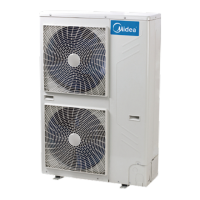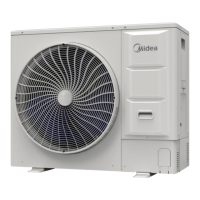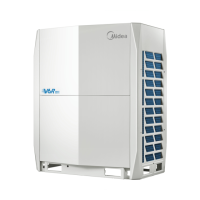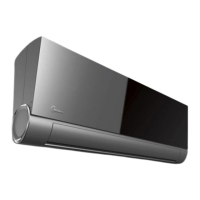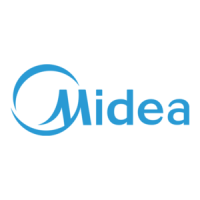R410A All DC Inverter V4+S Series 60Hz MCAC-VTSM-2015-09
104 Installation
Outer diameter of pipe (D) (in.(mm))
Minimum inlaid depth
(B) (in.(mm))
0.002(0. 05)-
0.01(0. 21)
0.002(0. 05)-
0.01(0. 27)
0.002(0. 05) –
0.014(0. 35)
4.5 Pipe cleaning
4.5.1 Flushing copper pipe
1. Function: use pressurized gas to flush pipeline (raw material or welded assembly) to remove dust and
moisture. Removing solid foreign material is difficult therefore steps should be taken to protect it during
construction.
2. Purpose
1) Eliminate oxide powder or part oxide layer in copper pipe.
2) Help to clear dirt and humidity out of piping.
3. Risks of not flushing:
If solids or moisture remain in the system serious malfunctions will occur, such as ice blockage, dirt blockage
and compressor jamming.
4.5.2 Flushing procedure
1. Mounting pressure adjusting valve on nitrogen gas cylinder. The applied gas must be nitrogen. If
polytetrafluoro ethylene or carbon dioxide is used, there is risk of condensation. If using oxygen, there is risk of
explosion.
2. Use inflation tube to connect the pressure adjusting valve outlet to the inlet on the liquid pipe side of the
outdoor unit.
nitrogen gas cylinder
Outdoor
unit
A indoor
unit
B indoor
unit
liquid pipe
gas pipe
3. Use blind plug to block all liquid side copper line connectors (including unit B) soundly, excluding indoor unit
A.
4. Turn on nitrogen gas cylinder valve, and then using the valve gradually pressurize to 5kgf/cm2.
5. Check to ensure nitrogen has passed through the liquid pipe of indoor unit A. Ensure the connector on the
side of indoor unit body has been covered by tape to prevent dirt from entering.
4.5.3 Detailed steps for flushing
1. Use suitable material, such as a bag or cloth, and press it firmly against the main opening on the gas side of
the indoor unit.
2. When pressure increases and hands cannot be held against the opening, suddenly release allowing gas to
